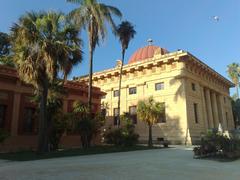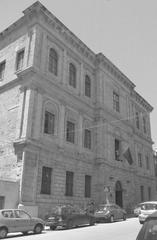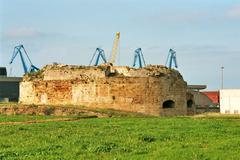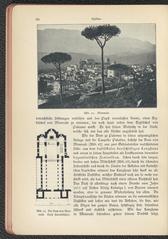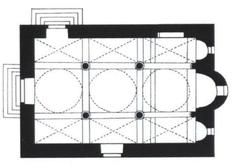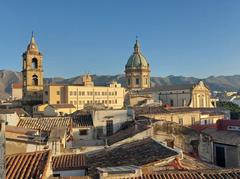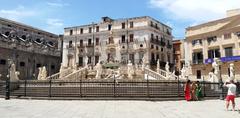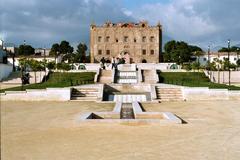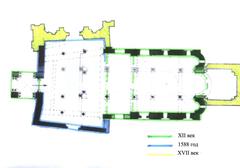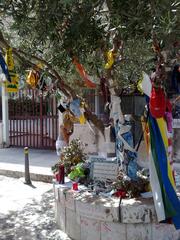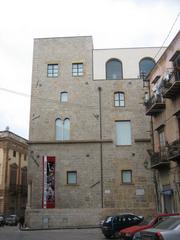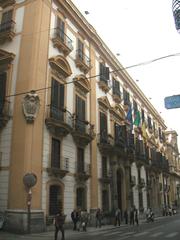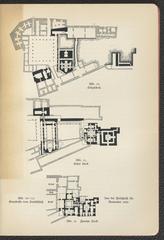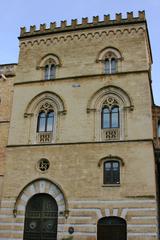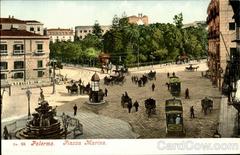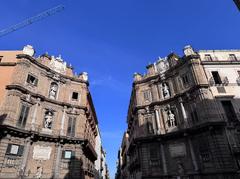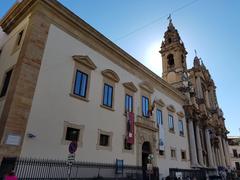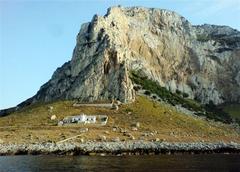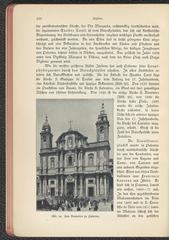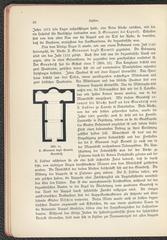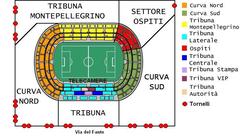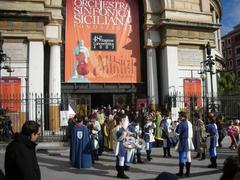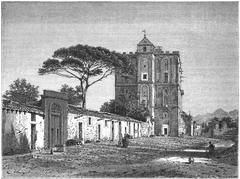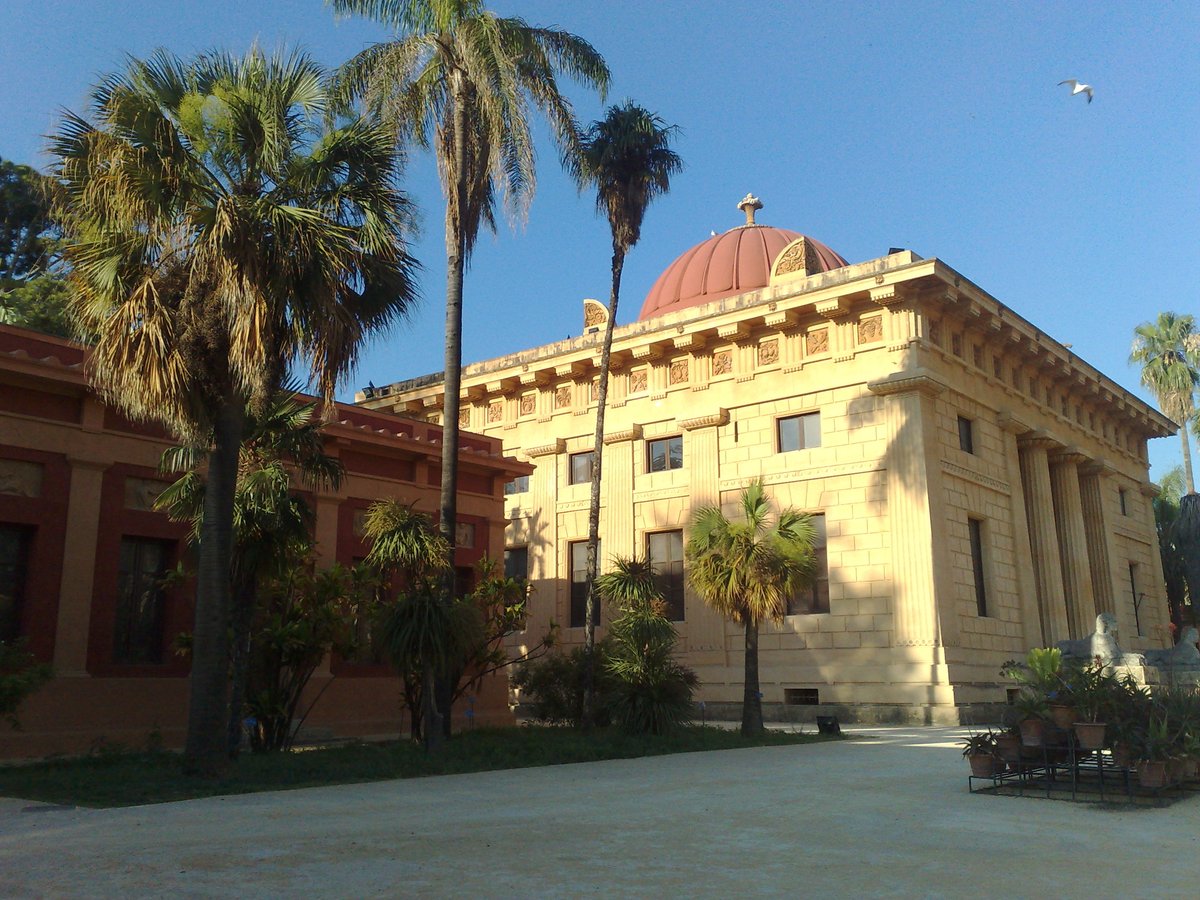
Orto Botanico di Palermo: Visiting Hours, Tickets, and Guide to Palermo’s Historical Botanical Treasure
Date: 14/06/2025
Introduction
Nestled in the heart of Palermo, Sicily, the Orto Botanico di Palermo is one of Europe’s most distinguished and historically significant botanical gardens. Established in 1789, it has evolved from a center for the study of medicinal plants into a sprawling living museum that showcases over 12,000 plant species from around the globe. Closely linked to the University of Palermo, the garden stands as a symbol of Enlightenment-era scientific inquiry, neoclassical architecture, and rich cultural heritage. This comprehensive guide covers the garden’s history, architectural highlights, visiting hours, ticket prices, accessibility, and essential tips to help you maximize your visit (Orto Botanico di Palermo Official; Livetheworld; Frustrated Gardener; Wonders of Sicily).
Historical Development and Architectural Heritage
Origins and Evolution
The Orto Botanico di Palermo was founded in 1789 during the Enlightenment, reflecting a burgeoning interest in scientific research and nature’s diversity. Initially dedicated to medicinal plants, the garden quickly became a leading institution for botanical study in Europe. Its design was inspired by the Linnaean system, grouping plants into thematic sectors for both educational and scientific purposes (livetheworld.com).
Over time, the garden expanded to encompass approximately 10–12 hectares, benefiting from Palermo’s Mediterranean climate to cultivate rare and exotic species. This growth solidified its role as a hub for botanical exchange and conservation (frustratedgardener.com).
Architectural Highlights
- Neo-Classical Gymnasium: Designed by Léon Dufourny, this grand entrance embodies Enlightenment ideals and serves as the garden’s administrative center.
- Calidarium and Tepidarium: These 18th-century structures flank the Gymnasium, providing controlled climates for tropical and temperate plants.
- Serra Maria Carolina: A 19th-century cast-iron and glass greenhouse donated by Queen Maria Carolina of Austria, used for exotic and delicate species.
- Historic Greenhouses: Ornate glasshouses blend function and beauty, nurturing orchids, succulents, and rare tropical plants (wondersofsicily.com).
- Aquarium: The central pond is home to aquatic plants and features marble sculptures, contributing to the garden’s artistic atmosphere.
- Entrance Gate: An intricately designed iron gateway marks the transition from city to sanctuary (livetheworld.com).
Botanical Layout
The garden’s organization follows the Linnaean system, with main avenues such as Viale Vincenzo Tineo and Viale delle Palme offering structured vistas. Themed sectors include:
- Mediterranean Garden
- Succulent and Cactus Garden
- Palm Grove
- Herb Garden
- Japanese Garden
Each area highlights different ecological and botanical themes, with clear signage and accessible paths.
Artistic and Symbolic Features
The statue of the Genius of Palermo (Genio di Palermo) resides within the garden, symbolizing the city’s resilience and spirit (wondersofsicily.com).
Visiting Hours and Ticket Information
Seasonal Opening Hours (as of June 2025)
(Comune di Palermo; Orto Botanico Official)
- November 1 – February 28:
- Monday–Saturday: 09:00–17:00
- Sunday: 10:00–17:00
- March 1 – March 31:
- Monday–Saturday: 09:00–18:00
- Sunday: 10:00–18:00
- April 1 – April 30:
- Monday–Saturday: 09:00–19:00
- Sunday: 10:00–19:00
- May 1 – August 31:
- Monday–Saturday: 09:00–20:00
- Sunday: 10:00–20:00
- September 1 – September 30:
- Monday–Saturday: 09:00–19:00
- Sunday: 10:00–19:00
- October 1 – October 31:
- Monday–Saturday: 09:00–18:00
- Sunday: 10:00–18:00
Check the official website for updates or special closures.
Ticket Prices
- Standard Admission: €7.00
- Reduced Admission: €4.00 (ages 6–25, over 70, teachers, affiliated associations)
- Group Rate: €5.00 per person (groups >10)
- Family Packages:
- €15.00 (2 adults + up to 3 children)
- €8.00 (2 adults + up to 4 children under 14)
- €5.00 (1 parent with child under 6)
- Combined Tickets:
- Orto Botanico + Palazzo Chiaramonte/Steri: €12.00 (full), €7.00 (reduced)
- Orto Botanico + Museo Archeologico A. Salinas: €10.00 (full), €5.00 (reduced)
- Orto Botanico + Museo Archeologico A. Salinas + Palazzo Chiaramonte/Steri: €17.00 (full), €12.00 (reduced)
- Orto Botanico + Museo Archeologico A. Salinas + Palazzo Chiaramonte/Steri + Monreale: €20.00 (full), €12.00 (reduced)
Tickets are sold at the entrance and online via the official ticketing portal.
How to Get There
- Location: Via Lincoln, 2, 90133 Palermo, Italy
- By Public Transport: Multiple bus lines stop nearby; the University stop is the closest.
- On Foot: Easily reachable from Palermo’s historic center and seafront.
- By Car: Limited parking; public transport is recommended.
Facilities and Accessibility
- Bookshop: Botanical literature, souvenirs, and educational resources.
- Cafeteria: Light meals and refreshments.
- Restrooms: Located throughout the garden.
- Accessibility: Main paths are wheelchair accessible, though some historic areas may be challenging.
- Guided Tours: Available for individuals, groups, and schools (advance booking recommended).
- Virtual Tours: Interactive online resources for remote visitors (Orto Botanico Official).
Botanical Collections and Notable Features
Plant Diversity
With approximately 12,000 species, the Orto Botanico di Palermo is a center for both Mediterranean and global biodiversity. Key plant families and collections include:
- Palms (Arecaceae): Flourishing in the local climate.
- Cacti (Cactaceae): Over 3,000 specimens, including the renowned Caroggio Collection.
- Orchids (Orchidaceae): Housed in the Serra delle Orchidee, with frequent exhibitions.
- Fabaceae, Moraceae, Rutaceae, Ginkgoaceae: Including monumental trees like the Moreton Bay fig (Ficus macrophylla) and ancient Ginkgo biloba.
Thematic Sectors
- “Quartini” System: The oldest section, divided into four quadrants and 23 beds, follows Linnaean taxonomy.
- Aquarium: An 18th-century water basin home to aquatic plants and turtles.
- Succulent and Cactus Greenhouse (Serra delle Cactaceae): Showcasing New and Old World succulents.
- Orchid House: Tropical orchids, expanded through international exchanges.
- Mediterranean and Sicilian Flora: Conserved through a dedicated germplasm bank.
Historic Trees and Living Monuments
- Ficus macrophylla: One of Europe’s largest Moreton Bay figs.
- Ginkgo biloba: A living fossil, part of the original Linnaean planting.
- Exotic Fruit Trees: Pineapple, banana, papaya, and coffee.
Conservation, Research, and Education
The garden is managed by the University of Palermo’s Department of Botanical Sciences and is a leading institution for plant conservation, scientific research, and public education. Its Herbarium Mediterraneum and library serve researchers and students, while school programs and workshops engage visitors of all ages (inpalermotoday.com).
Annual events like the “Zagara” festival—celebrating citrus blossoms and Mediterranean horticulture—draw locals and tourists alike (Orto Botanico Official).
Visitor Experience and Events
- Guided Tours: Bookable in advance, available in multiple languages.
- Seasonal Highlights: Spring and early summer for peak blooms; autumn for mild weather.
- Cultural Events: Art exhibitions, concerts, and the “Zagara” festival.
- Family-Friendly: Safe paths, interactive exhibits, and dedicated activities for children.
Unique Fauna
The garden is home to a lively colony of rose-ringed parakeets (Psittacula krameri), originally from nearby Villa Giulia, adding a vibrant ecological dimension to the site.
Frequently Asked Questions (FAQ)
Q: What are the Orto Botanico di Palermo visiting hours?
A: Hours vary seasonally; see the detailed schedule above or the official website.
Q: How do I purchase tickets?
A: Tickets can be purchased onsite or online through the official ticketing portal.
Q: Is the garden wheelchair accessible?
A: Main paths are accessible; some historic areas may have limited access.
Q: Are guided tours available?
A: Yes, for individuals, groups, and school groups—book in advance.
Q: What is the best time to visit?
A: Spring (March–June) for lush blooms and cool weather; early mornings or late afternoons are recommended.
Q: What nearby historical sites can I visit?
A: Palermo Cathedral, Teatro Massimo, Palazzo dei Normanni, Quattro Canti, and Ballarò Market are all within walking distance.
Practical Tips
- Duration: Allow 2–3 hours for a thorough visit.
- Photography: Permitted for personal use; professional shoots require prior permission.
- Sustainability: Respect plant life, use recycling bins, and support conservation initiatives.
- Events Calendar: Check the official events page for current exhibitions and festivals.
- Virtual Resources: Explore maps, images, and virtual tours on the official website.
Plan Your Visit and Stay Connected
The Orto Botanico di Palermo is a must-visit destination for anyone interested in botany, history, or simply seeking tranquility amid nature. Its proximity to major Palermo attractions makes it ideal for a day of exploration. For updates, events, and exclusive content, download the Audiala app and follow the garden’s social media channels.
Contact Information:
- Orto Botanico di Palermo
- Email: [email protected]
- Phone: +39 091 23891236
Conclusion
Orto Botanico di Palermo remains a living testament to Palermo’s commitment to scientific inquiry, conservation, and cultural enrichment. Whether you are a plant enthusiast, history lover, or traveler, a visit to this botanical gem offers a unique and multifaceted experience. With accessible facilities, educational programs, and a vibrant events calendar, the garden continues to inspire visitors from around the world. Plan your visit, explore its wonders, and become part of Palermo’s rich heritage (Comune di Palermo Tourism; Orto Botanico Official).
Official Sources and Further Reading
- Orto Botanico di Palermo: Visiting Hours, Tickets, and Historical Highlights, 2025, Livetheworld
- Orto Botanico di Palermo: Visiting Hours, Tickets, and Historical Highlights, 2025, Frustrated Gardener
- Orto Botanico di Palermo: Visiting Hours, Tickets, and Historical Highlights, 2025, Wonders of Sicily
- Orto Botanico di Palermo: A Visitor’s Guide to Botanical Wonders, Historical Sites, and Practical Information, 2025, Official University of Palermo Portal
- Orto Botanico di Palermo: Visiting Hours, Tickets & Must-See Historical Botanical Garden in Palermo, 2025, Comune di Palermo Tourism
- Discover the Orto Botanico di Palermo: Visiting Hours, Tickets, and What to See, 2025, Orto Botanico Official Website
- Conservation and Educational Role, 2025, In Palermo Today
